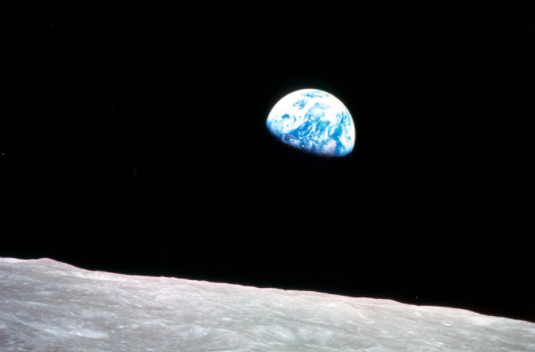Earth from Space
NASA's Artemis spacecraft took this picture of earth from space.
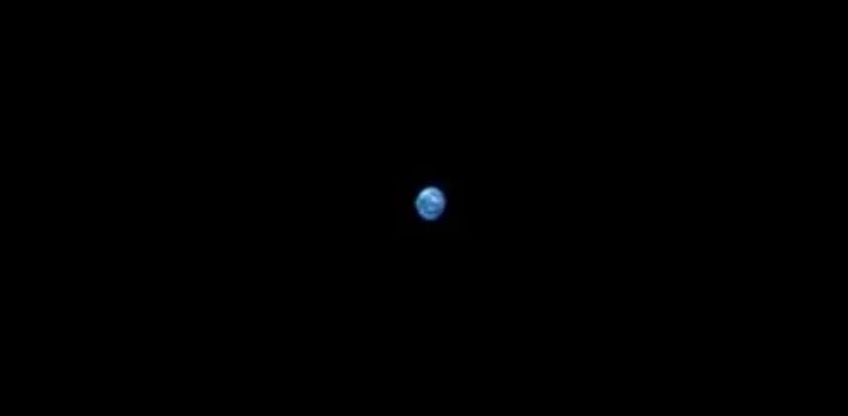
Earth as a dot
How small is Earth compared with space? NASA's Orion spacecraft captured a distant view of its home planet during the Artemis I flight test. This image comes from a camera mounted at the tip of one of Orion's solar array wings.
Earth from Space
Taken from the distance of the moon
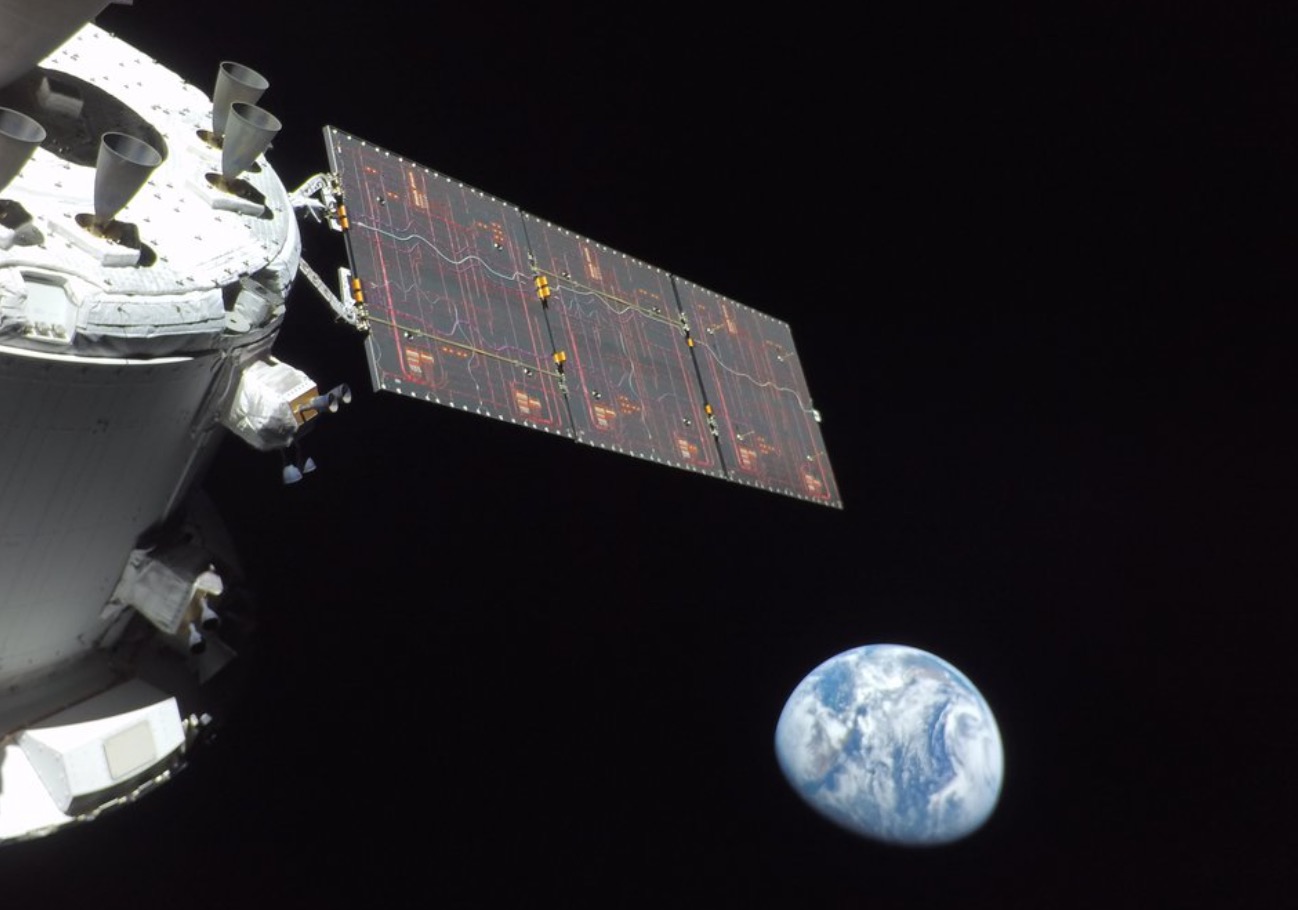
Another image of earth from space. Beautiful!
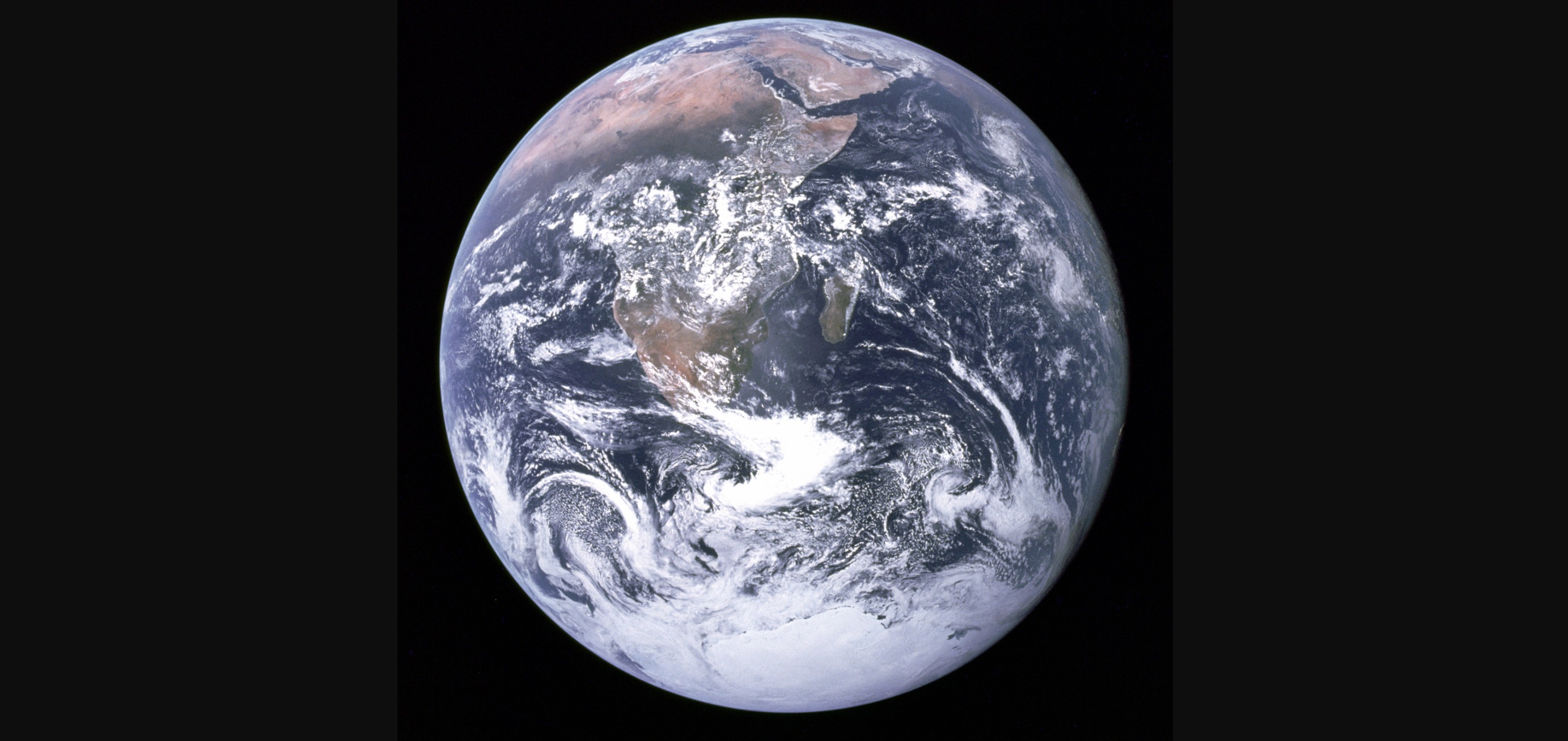
The Blue Marble image of Earth from Space
Reflections from Space [VIDEO]
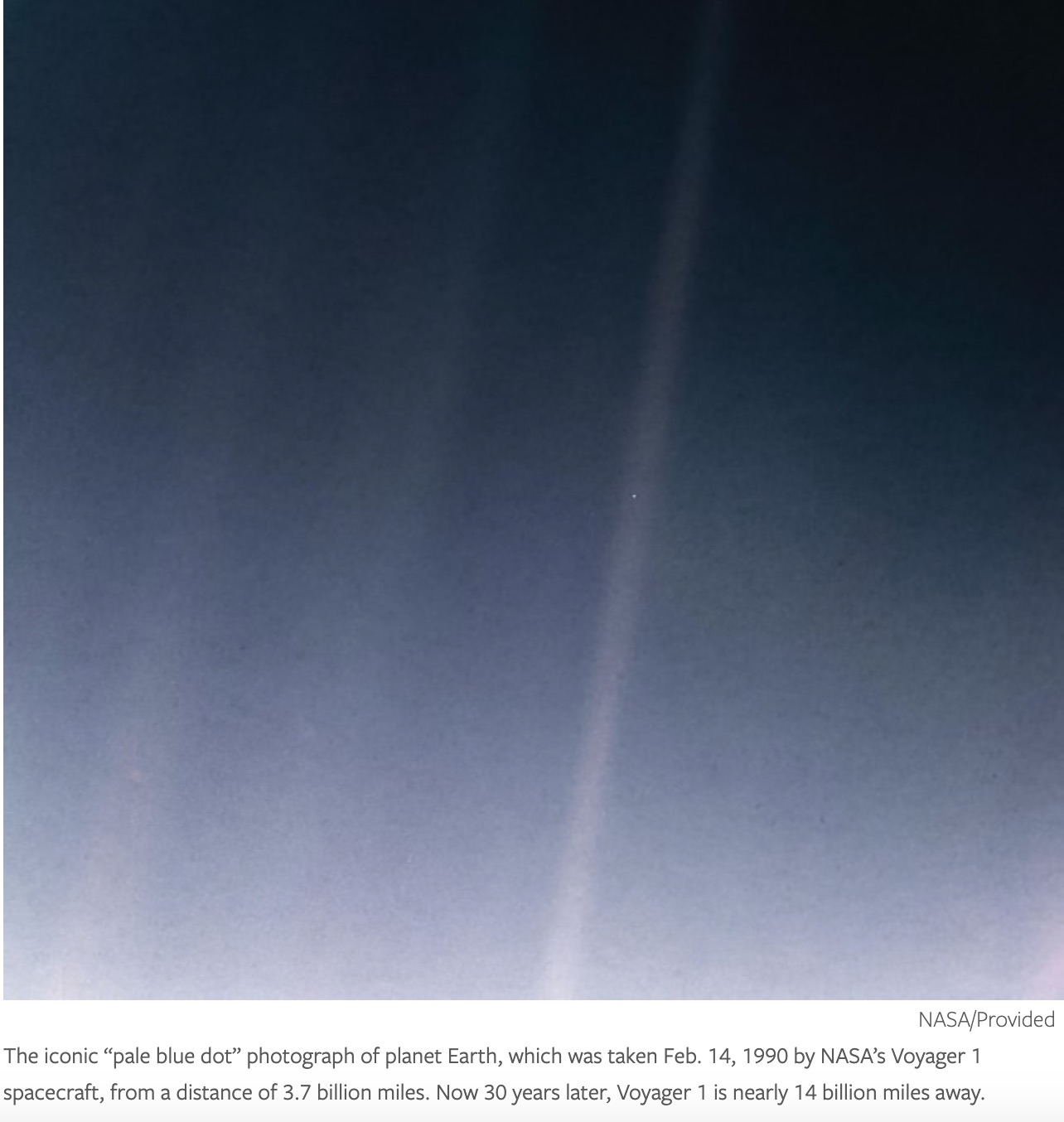
The Pale Blue Dot - Carl Sagan
History of images of Earth from space
December 21, 1968Apollo 8First full-disk image of Earth from space taken by a person, probably by astronaut William Anders.[34]December 24, 1968The first photograph of Earth taken by a human (Frank Borman) from another astronomical object (the Moon).[35]The Earthrise image is the first color image of Earth from the Moon by a person (William Anders),[26][6][13], moments after Borman's black-and-white photograph.July 21, 1969Apollo 11The much reproduced full frame image AS11-40-5903 of Buzz Aldrin, happens to be the first indirect image of Earth taken by a person from the surface of another astronomical object (from the Moon), having by accident in his visor a reflection of Earth.[36]First direct image of Earth taken by a person from the surface of another astronomical object (from the Moon), (AS11-40-5923).[14][37]November 24, 1969Apollo 12Black-and-white images and 16mm color film of a solar eclipse with the Earth, when the Apollo 12 spacecraft aligned its view of the Sun with the Earth.[38]December 7, 1972Apollo 17First fully illuminated color image of the Earth by a person (AS17-148-22725).[39] Soon after, the second shot after this, having the same perspective, became cropped and processed the widely used Blue Marble picture (AS17-148-22727).[40][41][image needed]1977KH-11First real-time satellite imagery.[42]September 18, 1977Voyager 1First full-disk picture of both Earth and the Moon.[28]February 14, 1990The Pale Blue Dot is the first image of Earth from beyond all of the other Solar System planets. It is part of the first picture of the full extent of the planetary system, known as the Family Portrait.[13][43]0:23December 11, 1990GalileoFirst movie of a full rotation of Earth.[44]External image [6][image needed]August 11, 1999Mir EO-27 (Perseus)First view of the shadow of the Moon projected onto Earth during a total solar eclipse (photograph taken by Jean-Pierre Haigneré).[38]External image [7][image needed]October 13, 1999IKONOSFirst commercial high-resolution (sub-meter) satellite photography (non-classified); it made the cover of the New York Times.[45]May 8, 2003 13:00 UTCMars Global SurveyorFirst image of Earth and the Moon from Mars (in orbit); notice South America is visible.[26][6]March 11, 2004Spirit Mars Exploration roverFirst image taken of Earth from the surface of Mars and any celestial body other than the Moon.July 27, 2006Cassini-HuygensThe Pale Blue Orb is the first image of Earth from Saturn (and second image from the outer Solar System).[46]
The Blue Marble is an image of Earth taken on December 7, 1972, from a distance of around 29,000 kilometers (18,000 miles) from the planet's surface.[1][2][3] Taken by the crew of the Apollo 17 spacecraft on its way to the Moon, it is one of the most reproduced images in history.[4][5][a]
It mainly shows Earth from the Mediterranean Sea to Antarctica. This was the first time the Apollo trajectory made it possible to photograph the south polar ice cap, despite the Southern Hemisphere being heavily covered in clouds. In addition to the Arabian Peninsula and Madagascar, almost the entire coastline of Africa and most of the Indian Ocean are clearly visible, A Cyclone in the Indian Ocean is also visible, The South Asian mainland is on the eastern limb.
NASA has also applied the name to a 2012 series of images which cover the entire globe at relatively high resolution. These were created by looking through satellite pictures taken over time in order to find as many cloudless photographs as possible to use in the final images. NASA has verified all images of the 2012 "blue marble" are composites as they cannot get far enough away and have to combine multiple photos together. Likewise, these images do not fit together properly and due to lighting, weather and cloud interference it is impossible to collect cohesive or fully clear images to begin with.[7]
